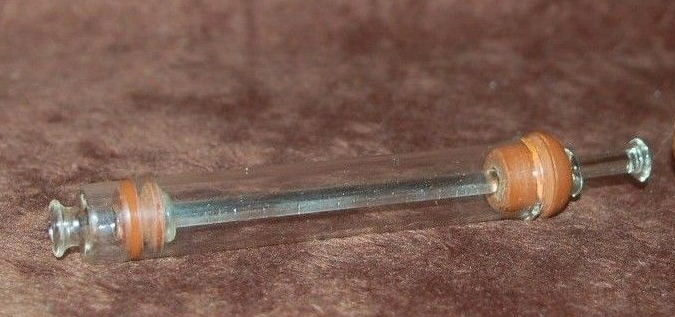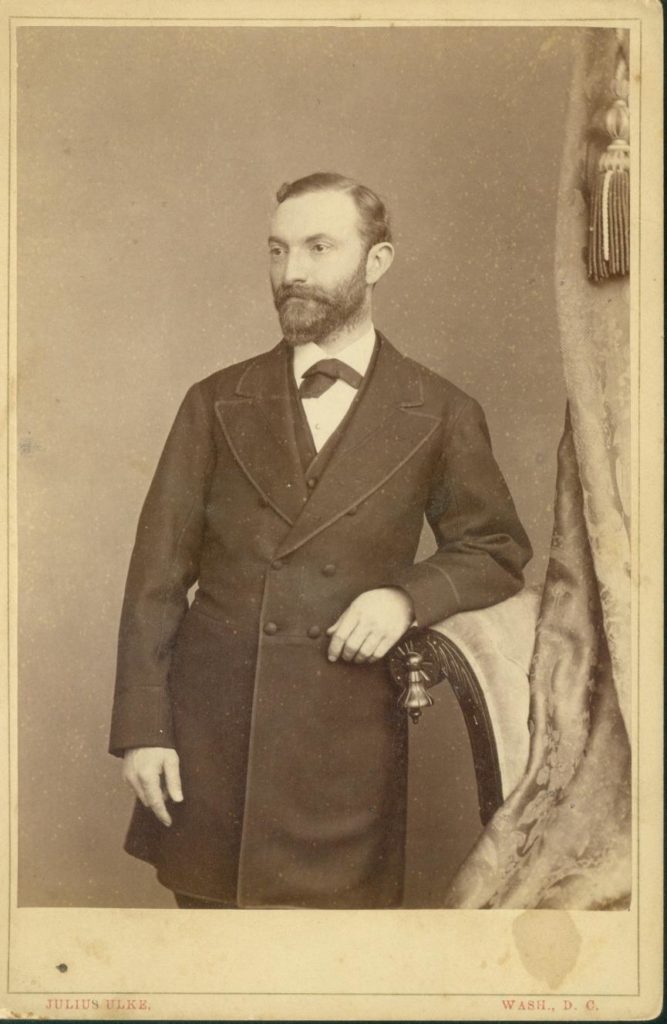Featured Fragment – Glass Syringe Plunger
By Joe Blondino
In June 2017, Dovetail conducted excavations on the grounds of Tudor Place, a historic Federal-style mansion in the Georgetown neighborhood of Washington, D.C. The excavations focused on an area immediately west of the main house known as the west service yard. This portion of the property currently contains a gazebo, ornamental arbors, a smokehouse (later used as a pigeon coop), and a patio area. Because Tudor Place staff has plans to renovate the structures and landscaping in this portion of the yard, Dovetail was asked to conduct archaeological investigations to ensure that no significant archaeological deposits would be disturbed. This was also an excellent opportunity to learn more about land use in this part of the Tudor Place property.
Among the 1,255 artifacts recovered during Dovetail’s excavations was a glass syringe plunger—the portion of a syringe that pushed liquid down the tube and through the needle or nozzle; it also helped to create the suction to draw fluid up into the body of the syringe. Prior to the 1950s, medical syringes were made of glass as opposed to the plastic examples we are used to seeing today. Kind of gives new meaning to the term “shot glass!”
The medical use of syringes has a fairly long history, dating back to the 1st century A.D., when they are described by Celsus in his comprehensive treatise on medicine, “De Medicina.” At this time, syringes were used for suction rather than for injection, and Celsus describes using them to remove discharge from patients’ ears (Feldmann 1999). By the seventeenth century, experimentation with intravenous injections was taking place, although the equipment used was large and cumbersome compared to modern syringes, with one early apparatus described as being no more than a “quill attached to a small bladder” (Macht 1916:857). These types of devices required the doctor or surgeon to make a separate incision through which to insert the apparatus. In 1844, an Irish surgeon named Francis Rynd invented a hollow needle for hypodermic administration of drugs using a gravity-fed system, and in 1853, Alexander Wood began using hollow, pointed needles which could easily pierce the skin with little pain or bleeding. In the same year, Charles Pravaz independently developed a needle and syringe that would become the prototype for modern equivalents (Macht 1916).
The question is, what is a syringe doing at Tudor Place? Well, the history of the property shows that it might not be such an unexpected find after all. It turns out that Dr. Armistead Peter operated a medical practice out of the east wing of Tudor Place from 1867 until 1882. Dr. Peter was a fairly well-known physician in Washington and, being versed in the latest medical developments and treatment procedures, would likely have used syringes like the one invented by Pravaz. During this time, one of the most common uses of syringes was for the injection of morphine and related drugs, and Dr. Peter may have used the syringe recovered by Dovetail to treat pain in one of his patients. Of course, since we don’t know for sure that this was a hypodermic syringe with a needle, it is also possible that it was used for some other purpose such as irrigating a wound or draining fluid from an infected area. Although we may never know exactly how this syringe was used or why part of the device was deposited along the edge of the west yard, this rather unusual artifact certainly injected a little excitement into our excavations!
Any distributions of blog content, including text or images, should reference this blog in full citation. Data contained herein is the property of Dovetail Cultural Resource Group and its affiliates.
References:
eBay
2017 Electronic document, https://www.ebay.com/itm/Antique-Wood-Cased-Glass-Doctor-Medical-Syringe-Glass-Plunger-Original-RARE-/142428023312, accessed July 13, 2017.
Feldmann, H.
1999 2000-year history of the ear syringe and its relationship to the enema. Images from the history of otorhinolaryngology, represented by instruments from the collection of the Ingolstadt Medical History Museum. Laryngorhinootologie 78(8):462‒467.
Macht, David I.
1916 The History of Intravenous and Subcutaneous Administration of Drugs. Journal of the American Medical Association LXVI:856‒860.



